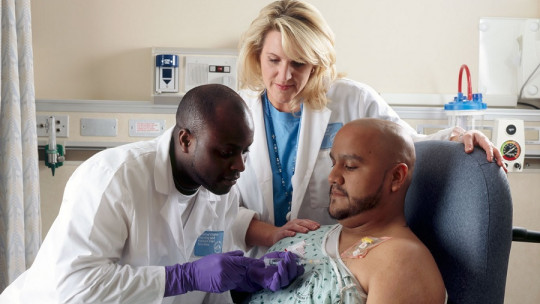The effective psychological treatments for the psychological disorders known today are very varied and include different blocks or steps. In fact, each psychological therapy has its idiosyncrasies.
However, within the framework of cognitive-behavioral therapy, there is a fundamental element for adequate psychological intervention in certain mental disorders: the tool of psychoeducation In this article we are going to explain in a simple way what this resource is and in which psychological disorders it is most frequently used, as well as some practical examples of its application.
What is psychoeducation?
Psychoeducation, always carried out by the professional in charge of the treatment, constitutes the prelude to many of the psychological treatments applied in consultations and hospitals. This does not mean that psychoeducation has to be used only at the beginning of the therapeutic process, but rather that can be dosed to ensure that the problem is understood by the patient or client (or group of patients).
Thus, psychoeducation consists of the explanation by the psychologist in charge of the treatment of different psychological constructs and variables that explain the problem of the patient or group of patients. In general, it explains what the disorder consists of (although in many cases it is not necessary to label the problem as a “disorder” for the patient, but rather to explain its characteristics so that he or she understands it and can deal with it in a more adaptive way), how the disorder affects the life of the patient. patient, frequent symptoms, what treatments exist, what can be done to improve, etc.
Sometimes, we will call psychoeducation all the technical information that we explain in therapy that we consider necessary for the patient’s improvement. For example, how we become depressed, what functional and dysfunctional anxiety is, how marijuana influences the brain, what repercussions induced vomiting has on our body…
Tools used in this type of psychological intervention
Although Each professional usually prepares his or her psychoeducational script When it comes to sessions with patients, it is important to highlight that the content of the explanation must be adapted to the person’s level of understanding and understanding, and in most cases the resources that we will see below are always useful. .
The use of analogies and metaphors
As psychological phenomena tend to be complex, it is good to make comparisons with everyday elements.
The use of a whiteboard or visual support
It is very useful to interact with the patient while giving the explanation. For example, asking questions and having the patient respond based on her own experience).
Provide a summary of what was explained in the psychoeducation session (or sessions)
This is so that the person can take it home, read it calmly and ask any questions about it.
Finally, to facilitate the psychoeducation process and complement it, psychologists recommend reading teaching manuals on some problems (not with the aim of them reading self-help manuals, but in order to better understand what is happening to them and work on it together in the sessions). Watching movies, documentaries, etc. are also useful.
Why is psychoeducation so important?
Psychoeducation is therapeutic in itself. Some patients often report that after having been able to take advantage of the psychoeducation sessions and understanding what is happening to them, they deflate like a “balloon”, they feel calmer, with better expectations. In fact, many people who suffer from anxiety reduce symptoms by understanding the mechanisms and causes of the same
The level of uncertainty of many people is directly reduced, and answers are given to the typical questions such as: What is happening to me? Am I going crazy? Does there have a “solution”? Is it just me? Does it happen to me or to other people?
Furthermore, in some cases and depending on the person’s capabilities, just by giving some psychoeducational guidelines in a few sessions The person is able to understand the mechanisms underlying their problem and put new strategies into practice, which is very interesting and often positive for the person.
It is often especially effective in group sessions with people who suffer from similar problems (e.g. a panic disorder group), as sharing similar experiences and feeling emotional support is a very comforting experience. It represents a very important help in the development of individual therapy for these people.
In what types of psychological problems is it used?
In general terms, psychoeducation can be very useful as the initial phase of treatment in most documented psychological disorders or problems. As an example, this is widely used among professionals in such well-known disorders as:
Practical examples
Below we will briefly explain the contents that could be explained in a psychoeducation session on anxiety disorders and post-traumatic stress disorder.
Psychoeducation in anxiety disorders
It is worth explaining what anxiety is (emotional response to danger/threat), the objective it pursues (protecting the organism – at this point the use of analogies or metaphors would be positive), the relationship that exists between anxiety and the autonomic nervous system, the activation process that It follows our body on a physical level when faced with a dangerous situation and explains all bodily sensations (muscle tension, increased heart rate, accelerated breathing, dry mouth, trembling in the legs…).
How our body reacts to “non-dangerous” situations in which the brain mistakenly interprets that there is danger, how the first panic attack can occur , the role played by our interpretations of bodily sensations, etc. Obviously, depending on the anxiety disorder, we must emphasize some concepts or others.
Psychoeducation in post-traumatic stress disorder
This explanation will vary depending on the type and frequency of the trauma that the victim has suffered.
An explanation is given about the typical intrusive responses (why distressing memories or nightmares occur), the function of persistent avoidance of memories or stimuli associated with the event, cognitive and mood alterations related to the episode (how exaggerated beliefs about oneself are formed), the significant alteration in activation and reactivity associated with the traumatic event (why do you feel hypervigilant all the time, what causes angry outbursts or irritable behavior, alterations in dream…).
Furthermore, it is useful to explain the maintenance of PTSD, for example through a simple adaptation of the Horowitz (1986) model or the Lang (1988) model.









